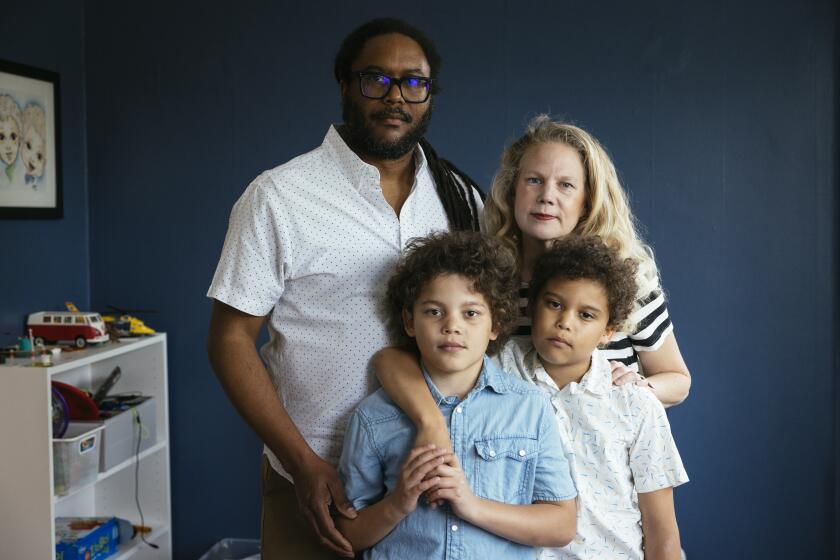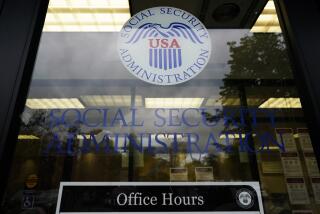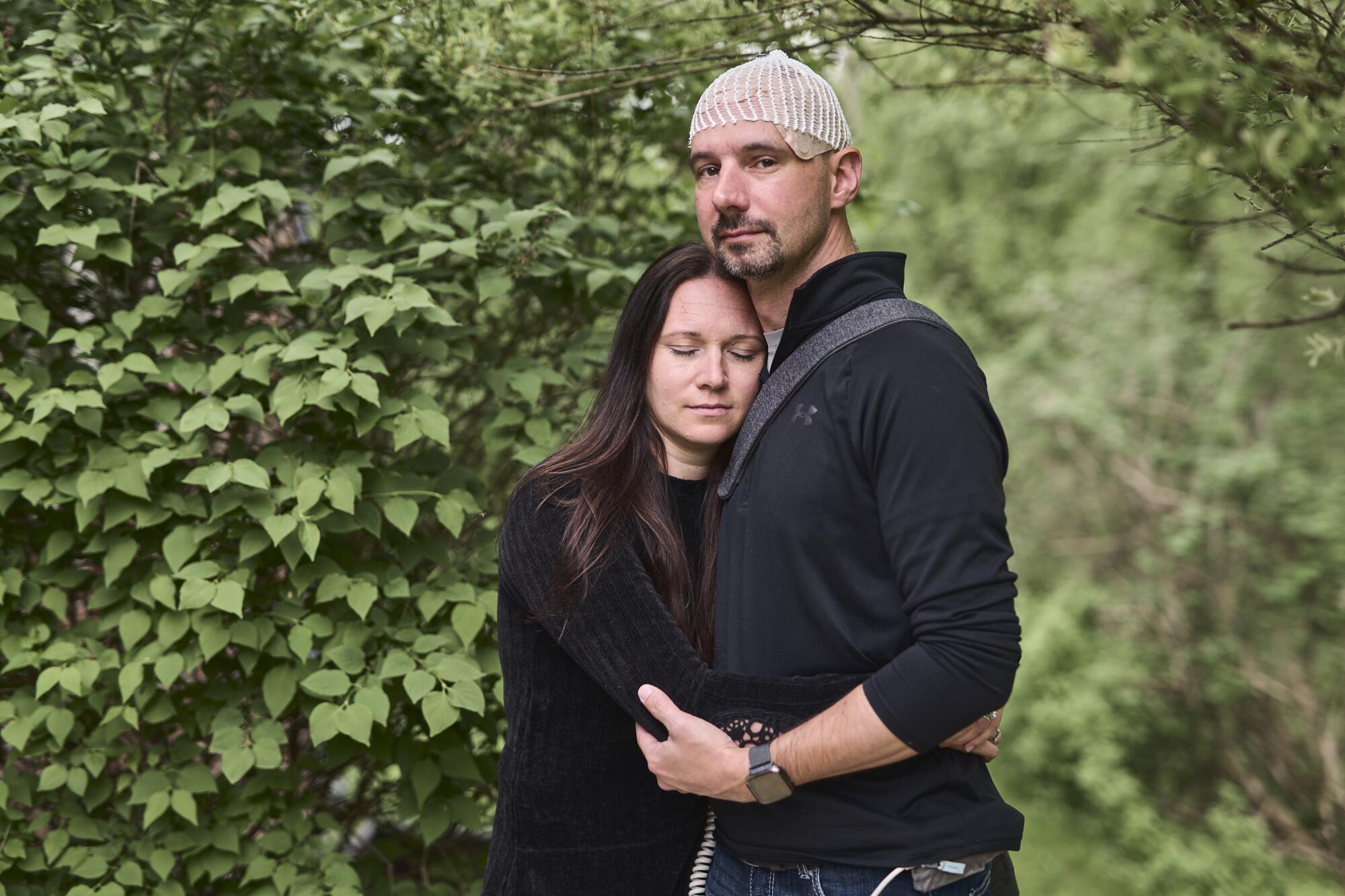
- Share via
Some lost their homes. Some emptied their retirement accounts. Some struggled to feed and clothe their families.
Medical debt now touches more than 100 million Americans, as the U.S. healthcare system pushes patients into debt on a mass scale.
Debtors come from all walks of life and all corners of the country. Here are their stories ― how they got into debt, what they’ve given up for it and how they’re living with the burden.
The U.S. health system now produces debt on a mass scale, an investigation shows. More than 100 million people are affected, far more than previously reported.
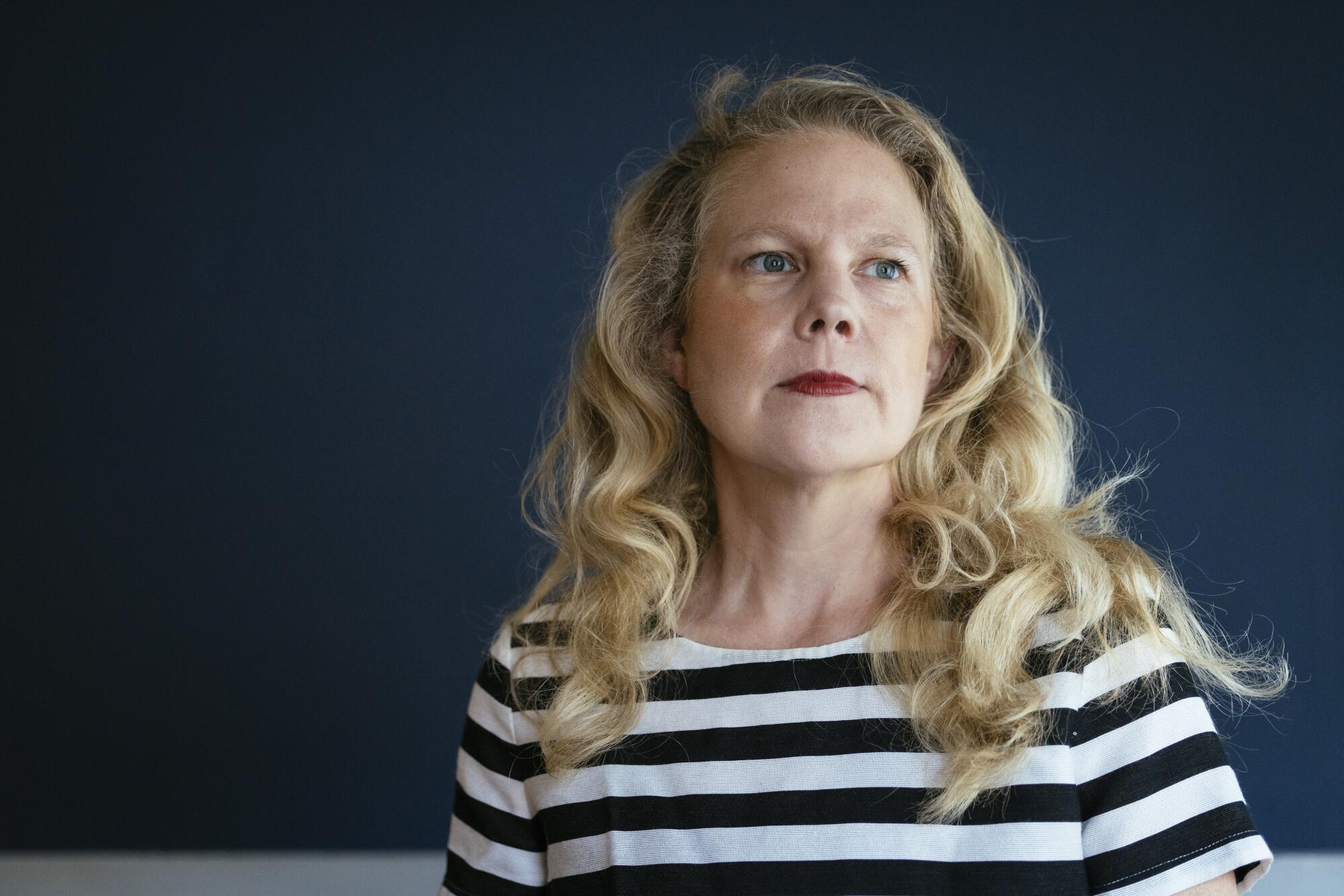
Double shifts, credit card debt, family loans when twins were born early
Allyson Ward, 43, Chicago
Approximate medical debt: $80,000
Medical issue: Childbirth
What happened: There were times after her sons were born 10 years ago when Allyson Ward wondered whether she and her family would lose their home.
On some days, she would tick through a list of friends and family, considering who could take them in. “We had a plan that we were not going to be homeless,” Ward recalled.
Ward is a nurse practitioner who works at a neonatal intensive care unit in Chicago. Her husband, Marcus, runs a small nonprofit.
But when the couple’s boys, Milo and Theo, were born 10 weeks prematurely, their lives were upended financially.
The twins were diagnosed with cerebral palsy. One required multiple surgeries to fix a breathing disorder. The babies spent more than three months in a NICU.
Ward and her husband scrambled to get the boys the care they needed, including years of physical and occupational therapy. The bills, which topped out at about $80,000, overwhelmed them.
Initially, much of it was from hospital care. Then their health plan denied thousands of dollars in claims for the boys’ therapies, deeming some unnecessary.
Desperate, Ward and her husband loaded up credit cards, borrowed from relatives and delayed repaying student loans. They moved back to the Midwest from Dallas to be closer to family who could help them.
In Chicago, Ward took on extra nursing shifts, working day and night several times a week. Her husband, who was finishing a master’s degree, watched the babies.
“I wanted to be a mom,” she said. “But we had to have the money.”
What’s broken: Ward and her husband had health insurance through her employer in Texas.
But that’s often not enough to protect patients from a major medical event. Most Americans who have medical debt had coverage, according to a Kaiser Family Foundation survey.
Even with health insurance, childbirth can be very expensive. One in 8 Americans who have healthcare debt say it was at least partially caused by pregnancy and childbirth.
Ward and her husband are also among tens of millions of Americans who end up with medical debt because their health plan didn’t pay for something they believed would be covered. Such insurance issues are the most common form of billing problem cited by Americans with debt.
What’s left: Since moving back to the Midwest, Ward and her husband have been slowly paying down the debt.
They bought a small house in Chicago in 2016. And Milo and Theo have been able to stay on grade level at school.
Although cerebral palsy can be severely disabling, the boys can run, ride bikes and go rock climbing, which Ward credits to the many therapists who have worked with them.
Ten years later, though, the family is still paying off nearly $10,000 in medical debt on their credit cards.
Ward said sometimes at work she looks sadly at new parents in the NICU, thinking about their financial strains ahead. “They have no idea,” she said.
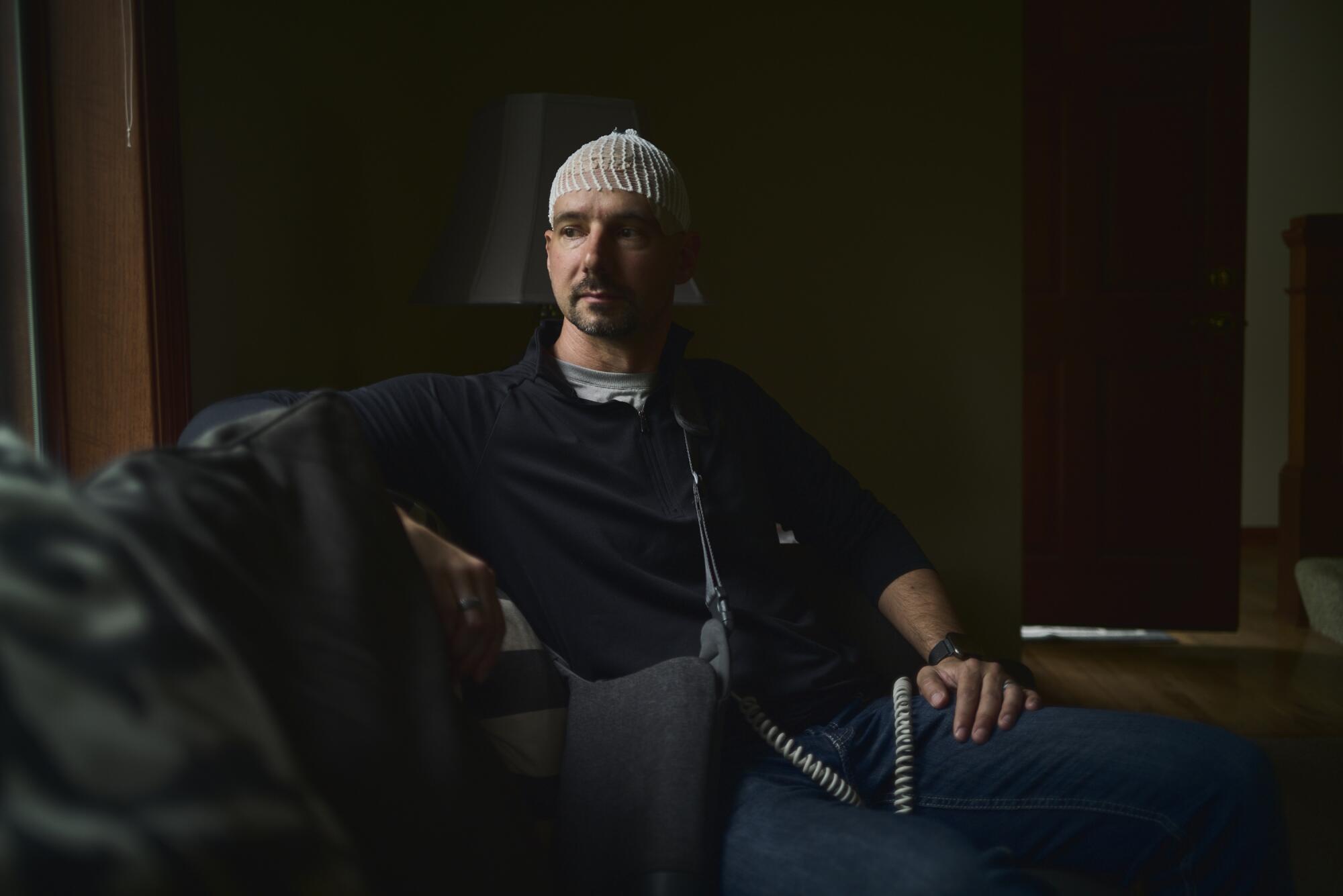
Damaged credit delays the dream of buying a home
Joe Pitzo, 42, Brookfield, Wis.
Approximate medical debt: $350,000
Medical issue: Cancer
What happened: Joe Pitzo and his wife, Amanda, had been married only five months when Joe was diagnosed with brain cancer in 2018. He would need brain surgery and extensive rehab.
They’d been planning to buy a house for their blended family of five children. Instead, they shifted their attention to doctor’s visits, insurance paperwork and hospital bills. And their finances fell apart.
“This just took a major toll on my credit,” Joe said. “It went down to next to nothing.”
Joe had insurance through his employer. Before his brain surgery, the couple confirmed that the surgeon and hospital were in their insurer’s network. But around 4 p.m. the day before the procedure, their insurer said a device the surgeons planned to use was medically unnecessary. It was not covered.
Joe and Amanda proceeded with the surgery, figuring they could deal with the bills later.
The bills, it turned out, topped $350,000.
Joe said the debt dragged down his credit score by several hundred points.
Their best hope for a home loan became Amanda, who didn’t have much credit, she said. She’d never taken out a mortgage or a car loan.
What’s broken: Difficulties with health insurance are a common feature of medical debt in the U.S.
Two-thirds of Americans with healthcare debt say they haven’t fully paid a bill because they were expecting their health plan to cover it, according to a nationwide survey conducted by KFF.
But health insurance rules and restrictions are often so complex that even diligent patients struggle to make sense of them.
It’s also not uncommon for medical debts to hurt patients’ credit scores. There’s growing pressure to change that.
This spring, the three leading credit agencies announced they would stop using small past-due medical bills in credit score calculations. And the federal Consumer Financial Protection Bureau plans to investigate whether any healthcare bills should be counted.
What’s left: The Pitzos managed to get the hospital to reduce their charges to about $30,000.
They worked to build Amanda’s credit so she could apply for the loan and were finally able to buy a house this spring.
They’re still making payments on about $19,000 in medical bills.
“It makes me sick about medical costs and how this whole thing is done,” Amanda said.
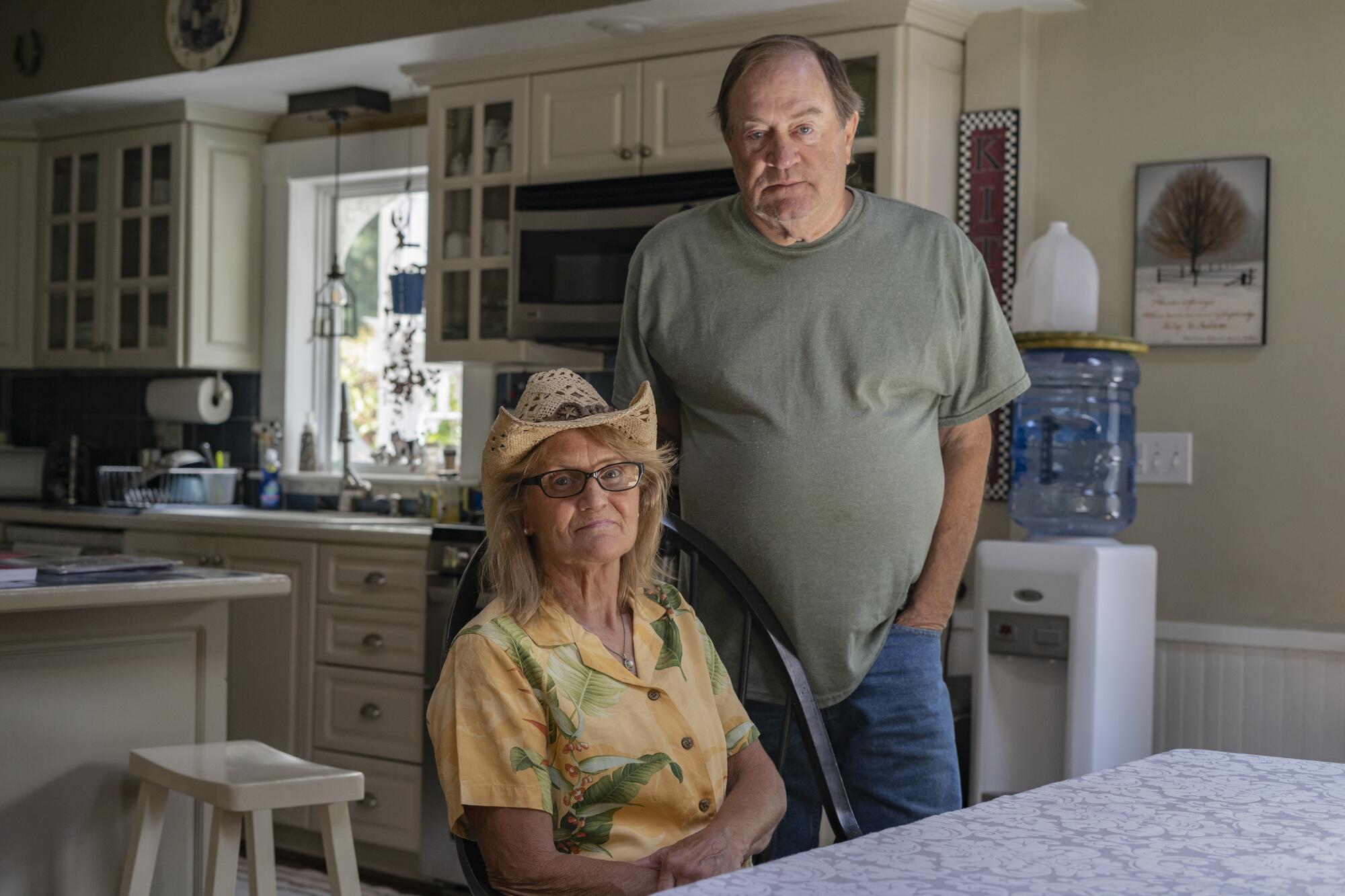
A surgery shatters retirement plans and leads to bankruptcy
Sherrie Foy, 63, Moneta, Va.
Approximate medical debt: $850,000
Medical issue: Colon surgery
What happened: Sherrie and Michael Foy thought they’d made all the right preparations when they moved to rural southwestern Virginia after Michael retired from Consolidated Edison, New York’s largest utility.
Sherrie Foy loved horses and had started to rescue unwanted animals. The couple had diligently saved. And they had retiree health insurance through Con Edison.
“We were never rich,” Sherrie said. “But we had what we wanted.”
Then in 2016, Sherrie, who had lived for years with persistent bowel irritation, had her colon removed. After the surgery, she contracted a dangerous infection and barely survived.
The complications produced nearly $800,000 in bills from the University of Virginia Health System for services that weren’t covered by the Foys’ health insurance.
When the couple couldn’t pay, the state sued Sherrie. The only way past it, the Foys concluded, was to declare bankruptcy.
The nest egg they’d carefully built so her husband could retire early was wiped out. They cashed in a life insurance policy to pay a lawyer and liquidated savings accounts they’d set up for their grandchildren.
“They took everything we had,” Foy said. “Now we have nothing.”
What’s broken: Foy fell victim to a gap in her husband’s retiree health insurance plan that capped lifetime coverage at $1 million.
Such caps were more common before the 2010 Affordable Care Act, though some plans with caps were grandfathered in.
Relatively few patients with medical debt are sued, and some medical centers have been forced to scale back the practice in recent years after news reports about the lawsuits. (The University of Virginia Health System changed its policies after a 2019 Kaiser Health News investigation.)
But hospitals and other medical providers still rely on the courts to collect from patients.
More broadly, bankruptcy caused directly or partially by medical debt remains a significant problem.
A nationwide KFF poll conducted for this project found about 1 in 8 adults with healthcare debt have been forced to declare bankruptcy.
What’s left: Sherrie said her health has improved.
After the complications from her surgery in Virginia, she returned to New York to seek care at a hospital she said saved her life. That hospital never billed her, she said. She doesn’t know why, but she believes she may have qualified for charity care.
The bankruptcy has been devastating. The Foys get by on Michael’s pension and their Social Security checks.
The same year they declared bankruptcy, Michael had a heart attack and their daughter was diagnosed with breast cancer.
“It was a disaster of a year,” Sherrie said. “No one should have to go through this.”
Sherrie has no health insurance. She hopes there won’t be more major medical bills before she turns 65 and qualifies for Medicare.
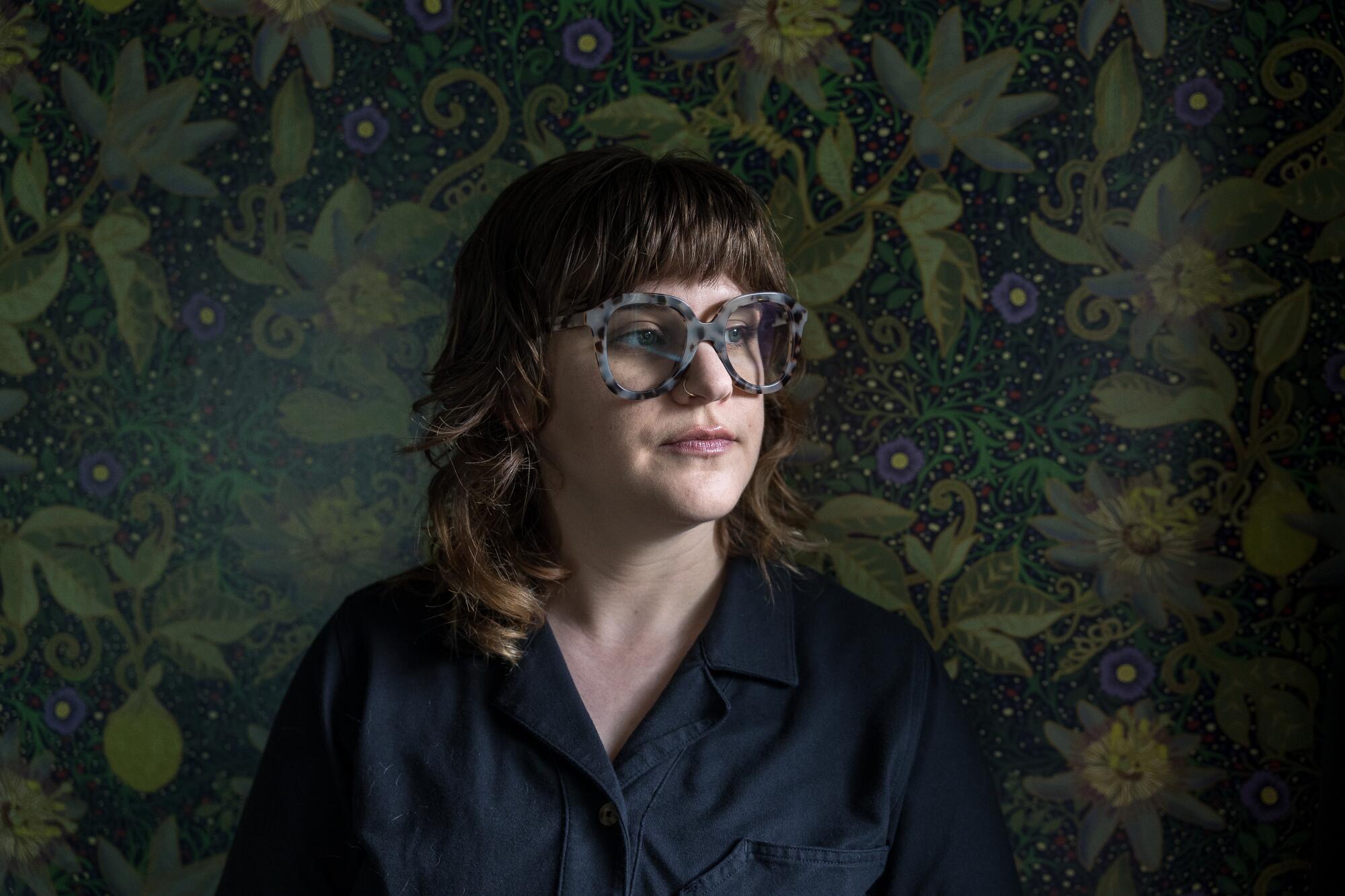
A sexual assault and years of calls from debt collectors
Edy Adams, 31, Austin, Texas
Approximate medical debt: $131
Medical issue: Sexual assault
What happened: Edy Adams had just graduated from college when she was sexually assaulted in 2013.
She was living in Chicago and believes she was drugged while at a bar.
Adams doesn’t remember what happened. When she woke up the next morning bruised and confused, she contacted the police and was directed to get an exam at a hospital emergency room, which confirmed the assault.
Police never found the perpetrator. Then two years later, Adams started getting calls from debt collectors saying she owed $130.58.
At first, Adams was confused. The hospital had told her that Illinois law prohibited medical providers from charging rape victims for a medical exam.
“I thought someone didn’t put in the proper billing code or something,” said Adams, who is now a medical student in Texas.
She explained the situation to the debt collector, who said the company would put a note in her file.
Nevertheless, about six months later, another call came from another debt collector seeking the same $130.58.
Adams again explained the situation. A few months later, there was yet another call.
It kept on for years, as her small debt was passed from one collector to another.
Adams tried to contact the hospital, but the bill was not its. It had originated with a physicians’ practice that had closed.
Sometimes when the debt collectors called, Adams would break down in tears on the phone. “I was frantic,” she recalled.
With each call, Adams said, she was forced to relive the worst day of her life and explain her trauma to a disembodied voice in a call center somewhere in the U.S.
“I was being haunted by this zombie bill,” she said. “I couldn’t make it stop.”
What’s broken: Federal regulators and consumer advocates for years have documented widespread problems across the debt collection industry, calling out collectors for not doing enough to verify and document bills before pursuing consumers.
The problems are particularly acute in medical debt collection. From 2018 to 2021, people contacted about a medical debt complained most frequently to the Consumer Financial Protection Bureau about being hounded for a debt they did not owe, the agency found.
And in a nationwide poll conducted by KFF, a third of Americans who had been contacted by a collection agency because of a medical or dental bill said the debt was not theirs.
What’s left: Adams found relief only after the last debt collector reported the bill to a credit reporting agency, which lowered her credit score.
Adams petitioned the agency to have the debt removed, which it quickly did.
Adams said she didn’t begrudge most of the people who called her over the years. “It seemed like they were only cogs in this giant debt machine,” she said.
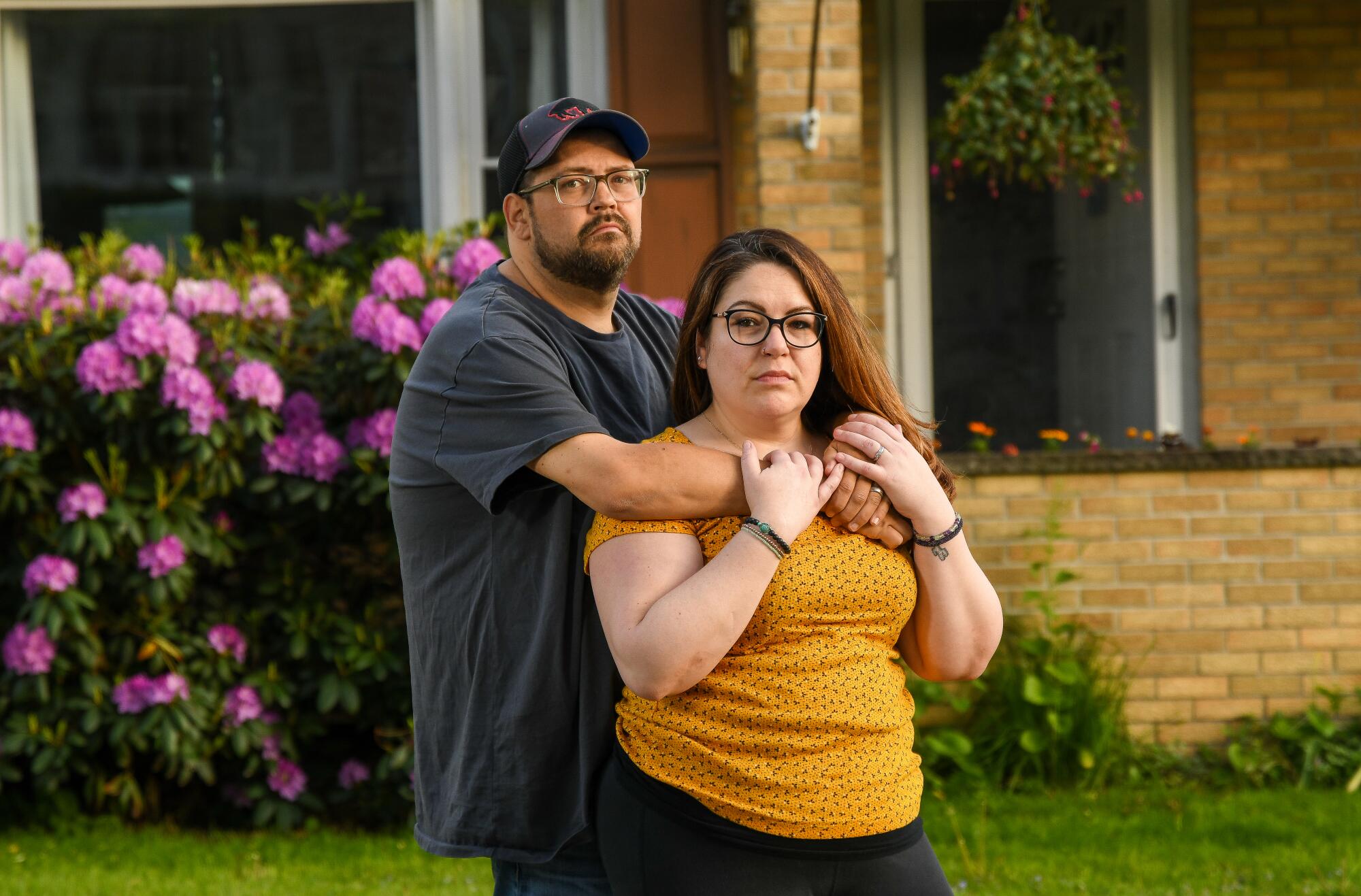
Hospital lawsuits and garnished wages on top of diabetes
Nick Woodruff, 37, Binghamton, N.Y.
Approximate medical debt: $20,000
Medical issue: Diabetes
What happened: Nick Woodruff’s wages were garnished for the first time in 2016.
Woodruff, who was diagnosed with diabetes in his 20s, had a good job. He worked for a truck dealership in this small city 175 miles northwest of New York while his wife, Elizabeth, completed her degree in social work. His job had health benefits. The couple had recently bought a home.
But a small infection on Nick’s foot related to the diabetes set off a cascade of medical emergencies and financial struggles that the Woodruffs are still laboring to put behind them.
First Nick’s infection spread to the bone and threatened to overwhelm his immune system. He was hospitalized and suffered damage to his heart and kidneys.
More complications followed. Nick slipped going down the stairs, shattering his foot. Doctors later had to amputate it.
Then came thousands of dollars of medical bills, followed by debt collectors.
“We were drowning in medical debt, and he was not doing well,” Elizabeth recalled.
The bills were overwhelming and often incomprehensible. “There’s a lot that we owe that we don’t even know,” Elizabeth said.
The Woodruffs withdrew money from their retirement accounts. Their siblings kicked in to pay off some bills.
Elizabeth got a job as a social worker at the hospital, Our Lady of Lourdes Memorial Hospital, a Catholic institution that is now part of the Ascension chain. But that did little to forestall the debt collectors.
The hospital sued Nick, and he was ordered to pay an additional $9,391 before Elizabeth persuaded the hospital to lower the bill by several thousand dollars.
What’s broken: The Woodruffs’ struggles with debt are a common experience for Americans who have chronic illnesses such as diabetes, heart disease and cancer.
These people are more likely to end up with medical debt than those who are healthy, a nationwide poll conducted by KFF found.
In fact, illness is the strongest predictor of medical debt, according to an analysis by the Urban Institute, which looked at county-level debt and disease data across the country.
In the 100 U.S. counties with the highest levels of chronic disease, nearly a quarter of adults have medical debt on their credit records. By contrast, in the healthiest counties fewer than 1 in 10 have debt.
What’s left: The Woodruffs have managed to pay down some of their debt, and Nick is on disability benefits because he’s no longer able to work.
Elizabeth has a new job, so she doesn’t have to work for the hospital that sued them.
They said they feel lucky to have been able to pay many of their bills. “I feel sorry for the people who don’t have the resources that we did,” Nick said.
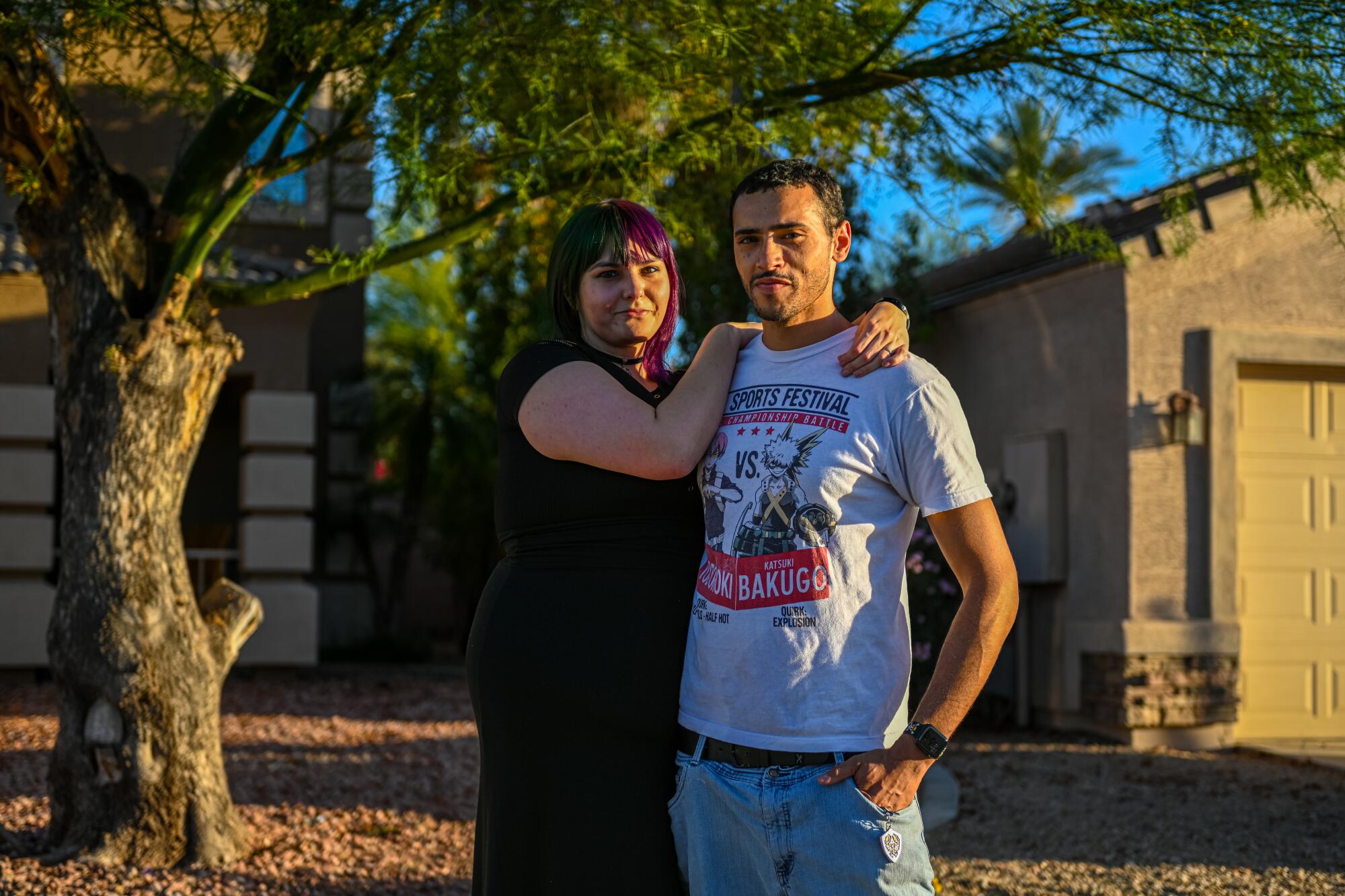
Denied care for a dangerous infection because of past-due bills
Ariane Buck, 30, Peoria, Ariz.
Approximate medical debt: $50,000
Medical issue: Infection
What happened: Ariane Buck knew it was important to stay on top of his healthcare.
The young father, who lives with his wife and three children outside Phoenix, had survived cancer when he was a child.
But making ends meet hasn’t always been easy for Ariane, who sells health insurance, and his wife, Samantha, a therapist who cares for people with autism.
At times the family has fallen behind on medical bills. Still, they never expected to be denied care.
Just before Father’s Day in 2016, Ariane grew very sick. He couldn’t hold down food without vomiting. There was blood in his stool.
Samantha called the family’s primary care doctor seeking an appointment. But the office turned the Bucks away.
“They said they wouldn’t see him because of past-due bills,” Samantha said, estimating they owed a few hundred dollars.
Ariane’s only choice was to go to a hospital emergency room. There he was diagnosed with a serious intestinal infection that required intravenous fluids and antibiotics.
The Bucks were also hit with thousands of dollars of additional bills they couldn’t pay.
What’s broken: Hospitals for decades have been required by federal law to provide emergency medical care to any patients who need it, regardless of their ability to pay.
But many medical providers, including physicians, have policies that allow them to turn away patients with past-due bills for nonurgent care.
The practice is surprisingly common. Nationwide, 1 in 7 Americans with healthcare debt say they have been denied care because of money they owe, a poll conducted by KFF found.
On top of that, tens of millions of Americans ration their care. About two-thirds of U.S. adults with debt from medical or dental bills say they or a member of their household have put off getting care they needed because of the costs.
What’s left: Buck recovered from the infection and is now in good health. But the family’s medical debt has swelled to more than $50,000, from Ariane’s bills and Samantha’s.
Samantha went to the emergency room twice in the last several years with painful cases of endometriosis.
The Bucks have taken out loans, loaded up their credit cards and sought help from charities.
“We’ve all had to cut back on everything,” Buck said. The kids wear hand-me-downs. They scrimp on school supplies and rely on family for Christmas gifts. A dinner out for chili is an extravagance.
“It pains me when my kids ask to go somewhere, and I can’t,” Buck said. “I feel as if I’ve failed as a parent.”
The couple are preparing to file for bankruptcy.
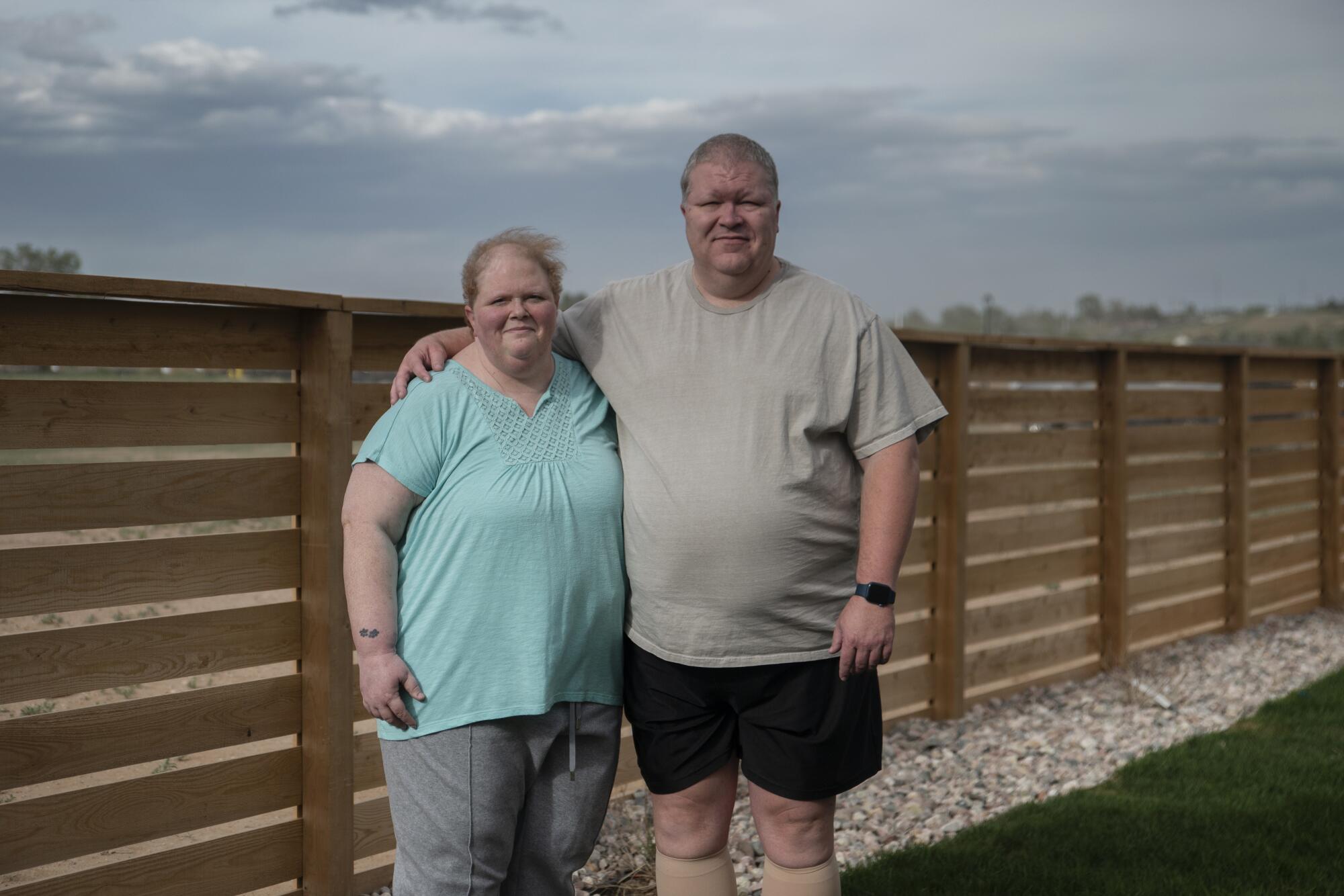
Nineteen surgeries over five years. Then they lost their house.
Cindy Powers, 52, Greeley, Colo.
Approximate medical debt: $250,000
Medical issue: Twisted intestine
What happened: Cindy Powers was 34 when doctors discovered she had a twisted intestine, a potentially life-threatening condition that doctors told her required immediate surgery.
She and her husband, Jim, were living outside Dallas at the time, where Jim had a job with a school district.
They had health insurance. But it couldn’t protect them from the flood of medical bills that swamped them after Cindy’s diagnosis.
Cindy’s first surgery, which lasted nine hours, would be followed by 18 more operations at hospitals across the Dallas-Fort Worth area. “Nobody was able to come up with a solution,” Jim said.
Cindy had recurring infections and hernias. Persistent pain left her addicted to the opioids she’d been prescribed.
“It was five years of hell,” Jim said of his wife’s medical ordeal.
By the time a surgeon finally repaired Cindy’s intestines in 2009, the couple had some $250,000 in medical debt. They declared bankruptcy.
The Powers also ended up losing their home when their mortgage was sold and the new lender rejected the payment plan set up through the bankruptcy.
A few years later, their adult daughter died. And in 2017, Cindy and Jim moved back to Colorado, where Cindy was from.
What’s broken: How much medical debt contributes to housing insecurity is difficult to measure, as many people forced out of their homes face a mix of financial challenges.
But a recent nationwide poll by KFF suggests that the debt from healthcare is forcing millions of people from their homes.
About 1 in 12 Americans with healthcare debt say they have lost their home to eviction or foreclosure at least in part because of what they owed, the survey found.
And about 1 in 5 say they or someone in their household have moved in with family or friends or made some other change in their living arrangement because of healthcare debt.
What’s left: After the bankruptcy and the move, the couple slowly got back on their feet financially.
Jim began work at an animal welfare group. Cindy, whose health has improved, got a job as well. The couple adopted their daughter’s girl, who’s now in sixth grade.
Then Jim needed prostate surgery. As he worked to scrape together the $1,100 he owed, he was sued by a debt collector.
“Things have got to change,” Jim said.
Levey and Pattani write for Kaiser Health News, an editorially independent publication of the Kaiser Family Foundation. Kaiser Health News is not affiliated with Kaiser Permanente.
More to Read
Inside the business of entertainment
The Wide Shot brings you news, analysis and insights on everything from streaming wars to production — and what it all means for the future.
You may occasionally receive promotional content from the Los Angeles Times.
